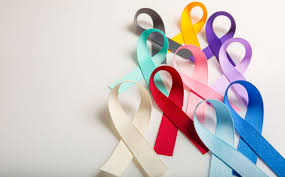We are programmed to always use our hands and feet, because they are the agents of mobility for us. This is also So because we constantly put our hands and feet in water, immersed in moist conditions.
Also, in the course of moving and using our limbs, we contact some infections, and if good hygiene is not employed, infects can occur. Therefore fungal infections can and do occur. Many people develop a fungal nail infection at some point in their life. It’s not usually serious, but can be unpleasant and difficult to treat. The infection develops slowly and causes the nail to become discoloured, thickened and distorted.
Toenails are more frequently affected than the fingernails. The medical name for a fungal nail infection is onychomycosis.
Fungal infections can affect any part of the body. Fungi are normally present in and on the body alongside various bacteria. When a fungus begins to overgrow, you can get an infection. Onychomycosis, also called tinea unguium, is a fungal infection that affects either the fingernails or toenails. Fungal nail infections are common. They’re not serious but they can take a long time to treat.
Fungal nail infections usually affect your toenails but you can get them on your finger nails too. Fungal nail infections usually start at the edge of the nail. They often then spread to the middle. The nail becomes discoloured and lifts off. The nail becomes brittle and pieces can break off. It can cause pain and swelling in the skin around the nail.
 What are the symptoms of a fungal nail infection
What are the symptoms of a fungal nail infection A fungal nail infection may not cause any obvious symptoms at first.
As it progresses, the infection can cause:
• discolouration of the nail – it may turn white, black, yellow or green
• thickening and distortion of the nail – it may become an unusual shape or texture and be difficult to trim
• pain or discomfort – particularly when using or placing pressure on the affected toe or finger
• brittle or crumbly nails – pieces may break off and come away completely
• Sometimes the skin nearby may also become infected and be itchy and cracked or red and swollen.
Causes
Most fungal nail infections occur as a result of the fungi that cause athlete’s foot infecting the nails. These fungi often live harmlessly on your skin, but they can sometimes multiply and lead to infections. The fungi prefer warm, dark and moist places like the feet.
Those at risk
• have diabetes
• have a disease that causes poor circulation
• are over age 65
• wear artificial nails
• swim in a public swimming pool
• have a nail injury
• have a skin injury around the nail
• have moist fingers or toes for an extended time
• have a weakened immune system
• wear closed-toe shoes, such as tennis shoes or boots
• don’t keep your feet clean and dry
• wear shoes that cause your feet to get hot and sweaty
• walk around barefoot in places where fungal infections can spread easily, such as communal showers, locker rooms and gyms
• have damaged your nails
• have certain other health conditions, such as diabetes, psoriasis or peripheral arterial disease
Fungal nail infections can be spread to other people, so you should take steps to avoid this (see below) if you have an infection.
CLICK HERE FOR PART 2
ABUJA: Training Schedule for Basic Life Support BLS, Pediatric Advanced Life Support (PALS), Advanced Cardiovascular Life Support ACLS, First Aid, CPR, AED
PORTHARCOURT: Training Schedule for Basic Life Support BLS, Pediatric Advanced Life Support (PALS), Advanced Cardiovascular Life Support ACLS, First Aid, CPR, AED
LAGOS: Training Schedule for Basic Life Support BLS, Pediatric Advanced Life Support (PALS), Advanced Cardiovascular Life Support ACLS, First Aid, CPR, AED




